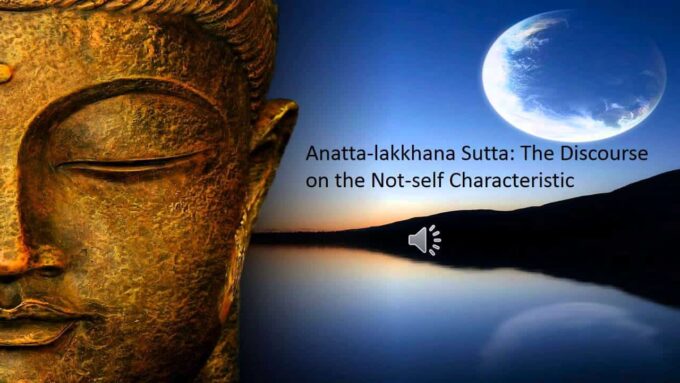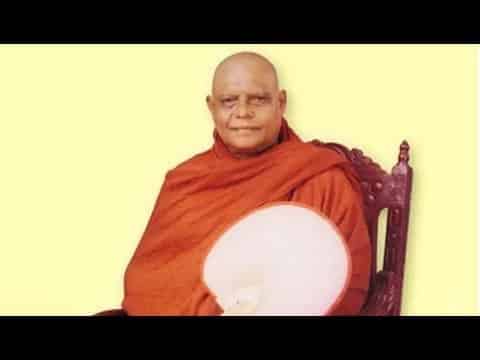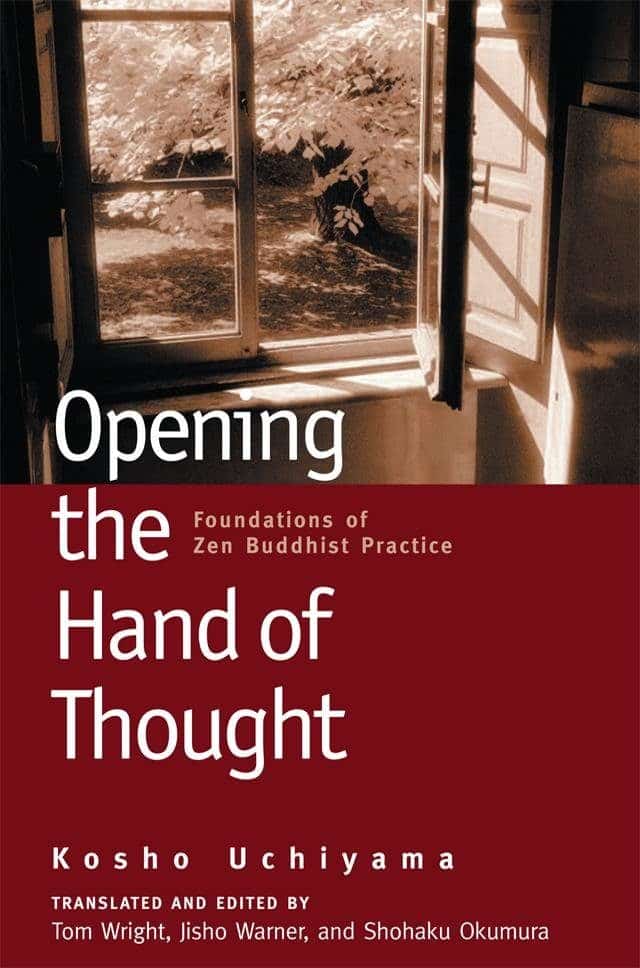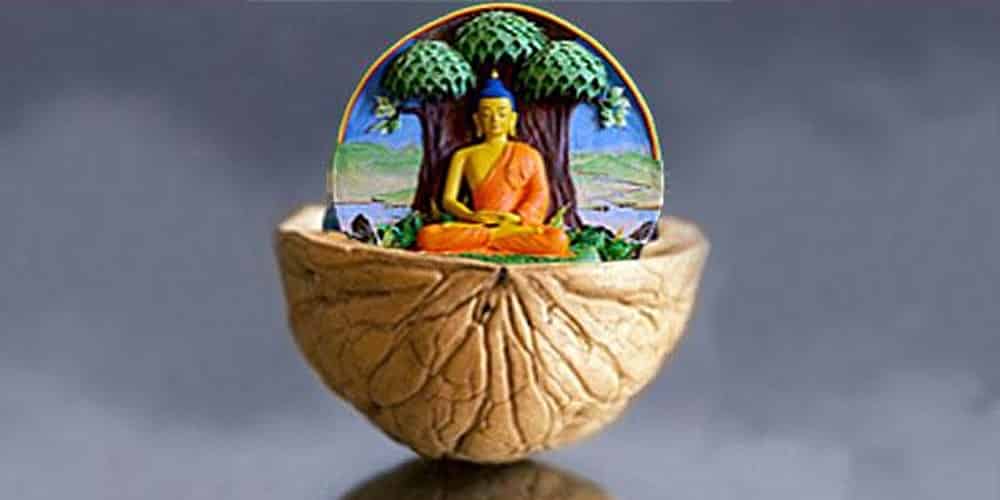On one occasion, the Bhagavā was staying at Bārāṇasi in the Deer Grove at Isipatana. There, he addressed the group of five bhikkhus: Bhikkhus. – Bhadante, the bhikkhus replied. The Bhagavā said:
– Rūpa, bhikkhus, is anatta. And if this rūpa were atta, bhikkhus, this rūpa would not lend itself to dis-ease, and it could [be said] of rūpa: ‘Let my rūpa be thus, let my rūpa not be thus.’ But it is because rūpa is anatta that rūpa lends itself to dis-ease, and that it cannot [be said] of rūpa: ‘Let my rūpa be thus, let my rūpa not be thus.’
– Vedanā, bhikkhus, is anatta. And if this vedanā were atta, bhikkhus, this vedanā would not lend itself to dis-ease, and it could [be said] of vedanā: ‘Let my vedanā be thus, let my vedanā not be thus.’ But it is because vedanā is anatta that vedanā lends itself to dis-ease, and that it cannot [be said] of vedanā: ‘Let my vedanā be thus, let my vedanā not be thus.’
– Saññā, bhikkhus, is anatta. And if this saññā were atta, bhikkhus, this saññā would not lend itself to dis-ease, and it could [be said] of saññā: ‘Let my saññā be thus, let my saññā not be thus.’ But it is because saññā is anatta that saññā lends itself to dis-ease, and that it cannot [be said] of saññā: ‘Let my saññā be thus, let my saññā not be thus.’
– Saṅkhāras, bhikkhus, are anatta. And if these saṅkhāras were atta, bhikkhus, these saṅkhāras would not lend themselves to dis-ease, and it could [be said] of saṅkhāras: ‘Let my saṅkhāras be thus, let my saṅkhāras not be thus.’ But it is because saṅkhāras are anatta that saṅkhāras lend themselves to dis-ease, and that it cannot [be said] of saṅkhāras: ‘Let my saṅkhāras be thus, let my saṅkhāras not be thus.’
– Viññāṇa, bhikkhus, is anatta. And if this viññāṇa were atta, bhikkhus, this viññāṇa would not lend itself to dis-ease, and it could [be said] of viññāṇa: ‘Let my viññāṇa be thus, let my viññāṇa not be thus.’ But it is because viññāṇa is anatta that viññāṇa lends itself to dis-ease, and that it cannot [be said] of viññāṇa: ‘Let my viññāṇa be thus, let my viññāṇa not be thus.’
What do you think of this, bhikkhus: is Rūpa permanent or anicca?
– Anicca, Bhante.
– And that which is anicca, is it dukkha or sukha?
– Dukkha, Bhante.
– And that which is anicca,dukkha, by nature subject to change, is it proper to regard it as: ‘This is mine. I am this. This is my atta?’
– No, Bhante.
– Is Vedanā permanent or anicca?
– Anicca, Bhante.
– And that which is anicca, is it dukkha or sukha?
– Dukkha, Bhante.
– And that which is anicca,dukkha, by nature subject to change, is it proper to regard it as: ‘This is mine. I am this. This is my atta?’
– No, Bhante.
– Is Saññā permanent or anicca?
– Anicca, Bhante.
– And that which is anicca, is it dukkha or sukha?
– Dukkha, Bhante.
– And that which is anicca,dukkha, by nature subject to change, is it proper to regard it as: ‘This is mine. I am this. This is my atta?’
– No, Bhante.
– Are Saṅkhāras permanent or anicca?
– Anicca, Bhante.
– And that which is anicca, is it dukkha or sukha?
– Dukkha, Bhante.
– And that which is anicca,dukkha, by nature subject to change, is it proper to regard it as: ‘This is mine. I am this. This is my atta?’
– No, Bhante.
– Is Viññāṇa permanent or anicca?
– Anicca, Bhante.
– And that which is anicca, is it dukkha or sukha?
– Dukkha, Bhante.
– And that which is anicca,dukkha, by nature subject to change, is it proper to regard it as: ‘This is mine. I am this. This is my atta?’
– No, Bhante.
Therefore, bhikkhus,
– Whatever rūpa, be it past, future, or present, internal or external, gross or subtle, inferior or exalted, far or near, any rūpa is to be seen yathā-bhūtaṃ with proper paññā in this way: ‘This is not mine, I am not this, this is not my atta.’
– Whatever vedanā, be it past, future, or present, internal or external, gross or subtle, inferior or exalted, far or near, any vedanā is to be seenyathā-bhūtaṃ with proper paññā in this way: ‘This is not mine, I am not this, this is not my atta.’
– Whatever saññā, be it past, future, or present, internal or external, gross or subtle, inferior or exalted, far or near, any saññā is to be seenyathā-bhūtaṃ with proper paññā in this way: ‘This is not mine, I am not this, this is not my atta.’
– Whatever saṅkhāras, be them past, future, or present, internal or external, gross or subtle, inferior or exalted, far or near, any saṅkhārasare to be seen yathā-bhūtaṃ with proper paññā in this way: ‘This is not mine, I am not this, this is not myatta.’
– Whatever viññāṇa, be it past, future, or present, internal or external, gross or subtle, inferior or exalted, far or near, any viññāṇa is to be seenyathā-bhūtaṃ with proper paññā in this way: ‘This is not mine, I am not this, this is not my atta.’
Seeing thus, an instructed noble disciple gets disenchanted with rūpa, disenchanted with vedanā, disenchanted with saññā, disenchanted with saṅkhāras, disenchanted with viññāṇa. Being disenchanted, he becomes dispassionate. Through dispassion, he is liberated. With liberation, there is the ñāṇa: ‘Liberated.’ He understands: ‘Birth is ended, the brahmic life has been lived, what was to be done has been done, there is nothing more for this existence.’
This is what the Bhagavā said. Delighted, the group of five bhikkhus was pleased by his words.
And while this exposition was being given, the cittas of the group of five bhikkhus, by not clinging, were liberated from the āsavas.
(Thanissaro Bhikkhu’s translation.)
***
The introduction to the Sutta was recorded by the Elders of the First Council in the Khandhavagga of the Saṁyutta Nikāya of the Pāli Canon. This is said to be the second discourse delivered by the Buddha to the five monks [the group of five were the five ascetics who had previously followed the Bodhisatta while he was practicing austerities and who later heard the First Discourse and became the Buddha’s first monk disciples] who were still learners (sekha), that is, any of the seven kinds of saints. At the end of the discourse, however, they became arhats. The first discourse is a statement of the Buddha’s discovery of “suffering and its ending,” and what is merely mentioned, “in short, the five aggregates of clinging are suffering”, is elaborated in the second discourse, the Anatta Lakkhana Sutta, where the five aggregates are given in detail.
The Samyutta Commentary says that the Anatta Lakkhaṇa Sutta was delivered on the fifth day of the following fortnight after the teaching of the First Discourse, on the full-moon day of Asalha (June-July). With the awakening of the five monks, the noble sangha is established and the Dispensation begins: Buddhism is born.
The Sutta is also called the Panca Sutta (the Discourse on the Five) for two reasons: it teaches about the five aggregates, and secondly, the audience are the five monks. The Commentaries say that after all five monks had become Stream Enterers and received ordination as members of the Buddha’s Order, the Buddha taught them the Anattalakkhaṇa Sutta on the 5th waning day of July. Thus, “at one time” in the introduction means the 5th waning day of July, while the Blessed One was still staying in the Deer Sanctuary near the town of Varanasi.
The Anatta Lakkhaṇa Sutta gives two arguments against the notion of an abiding self. The first is that we are merely the five aggregates, and none of these aggregates can come under our control (avasa,vattita). If anything is to be regarded as our self, we should be able to willfully control it, but this is not the case. We only have the delusion that we are in control, or desire to be in control, but in reality, we are blindly led on by our latent tendencies.
The second argument against the self-notion is in connection with the three characteristics: impermanence, unsatisfactoriness and not-self. Not-self is demonstrated on the basis of the other two characteristics, impermanence and suffering. A fuller analysis of this not-self doctrine is given in the Cula Saccaka Sutta.
One of the most important, and hard to grasp, of all Buddhist teachings is the doctrine of anatta, or “no-self”. One of Sakyamuni Buddha’s teachings about the cause of suffering was that it was a result of false illusions about the self. The self, or soul, or “essential person”, was an illusion. Thus Buddhism does not teach that “you” are “soul” which is “reborn” (although certain forms of Hindu teaching may be understood in this way. Rather Buddhism teachers the “Mind” and “Mindfulness” exist, and that there is a karmic continuity between incarnations of mind. The link then is karmic, not essential. The Anattalakkhana Sutta is a document from the Pali canon of Buddhist scriptures in which the Buddha argues for this idea.
Photo credit: HappyLotus




